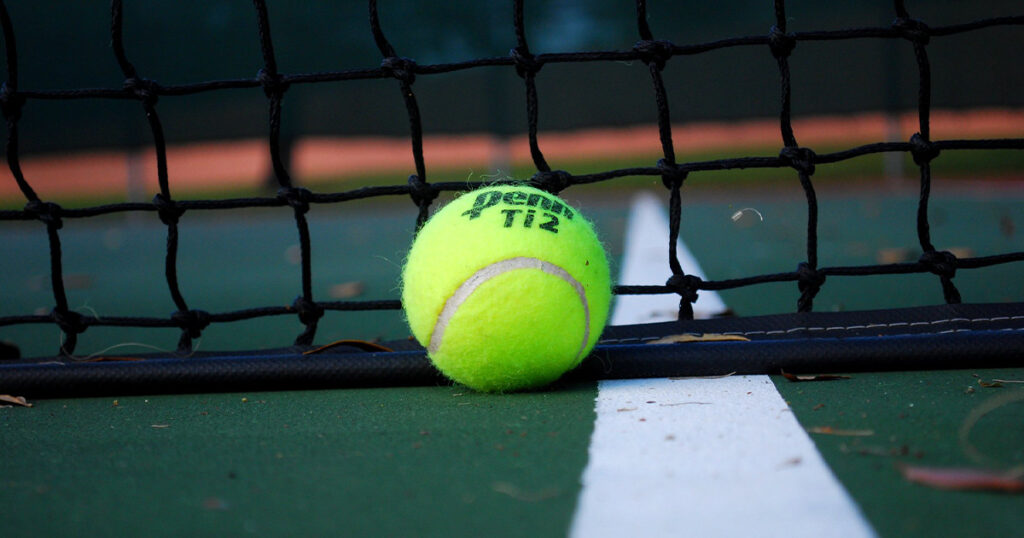
At some point during the fifth set of last Sunday’s U.S. Open men’s final, as Dominic Thiem and Alexander Zverev staggered toward a wildly improbable and captivating conclusion, it was possible to forget the surreal circumstances surrounding this year’s tournament. Zverev, a 23-year-old German, had built a two-sets-to-love lead, channeling a young Pete Sampras as he bombed 130-mile-per-hour second serves and dabbling in an art form largely extinct from the modern game, the serve and volley. But then Zverev grew nervy as the closing moments turned into a survivalist challenge more than a tennis match, with Thiem hobbling on unsteady legs and Zverev unleashing a series of ghastly double faults. In the end, it was Thiem, the Austrian favorite, who rallied to win his first Grand Slam title—the only time the Open has been decided in a fifth-set tiebreaker. The tension had matched the women’s final the previous afternoon, when Victoria Azarenka, the resurgent former number one from Belarus who had been sidelined due to a lengthy custody battle over her son, and Naomi Osaka, the 22-year-old Japanese superstar, produced three sets of exquisite tennis before Osaka won her third Grand Slam title.
Yet for all the moments of sporting drama and sublime shot-making, it was impossible to forget completely the tournament’s bizarre backdrop. Because of the coronavirus, no fans were admitted to the grounds, and the players were subject to a strict quarantine. I’ve come to associate an eerie quiet with the pandemic: gone is our normal soundtrack of coffee-shop chatter, rush-hour horns, colleagues overheard on the phone. In the case of sports, the lack of crowd noise has created a disquieting viewing experience, as if the players are performing an elaborate dress rehearsal, the real thing scheduled for some unknown future date. And it’s changed the competitive dynamic. Imagine the hyper-charged New York atmosphere that would have greeted Thiem and Zverev as they embarked on their fifth-set tiebreaker. Perhaps Zverev would have felt even more pressure, dumped even more second serves into the net. Or perhaps he would have played off the emotion and delivered the missing forehands that separated him from glory. That ability for fans to help shift the dynamics of a match may be true of all the majors, but it especially defines the experience at Flushing Meadows.
Just about every year for a quarter of a century—roughly from 1980 until the mid-aughts—I attended the U.S. Open with my father. We’d always get tickets for the first week, buy a draw sheet from a vendor after clearing the turnstiles, and find the most promising match on the outside courts. Only the top 16 players got seeds in those bygone days, so it was possible, if the draw was particularly unkind, to find two premium players squaring off in the early rounds, far removed from the main stadium. The outside courts typically had little in the way of assigned seating, and if you arrived early enough, you could park yourself so close to the players that it felt practically voyeuristic to witness in such intimate terms their exertion and self-exhortation. If a match appeared headed the distance, a swarm of spectators would descend on the court, peering through gaps in the bleachers or the wind-guards covering the surrounding fence, and things would get rowdy—a pop-up mini-drama in five sets.
What a contrast to this year. Without fans in the stadium, the television cameras were able to capture the action from new angles, but that only served to heighten the loneliness of the undertaking, the absence of a volatile outside force bringing its presence to bear on the proceedings. Still, this year’s tournament may well represent a turning point. Consider that it was the first Grand Slam since the 2004 French Open in which none of the finalists was named Serena, Roger, Rafa, or Novak, so unrelenting have they been in their dominance. Williams, nearing 40, a loser to Azarenka in the semifinals, has assumed the role of wizened matriarch; her chances of winning slam number 24, which would tie her on the all-time list with Margaret Court, have all but slipped away. On the men’s side, Thiem and Zverev have been anointed as two possible successors to the Big Three, and though Thiem has finally broken through, he didn’t face Federer (who’s recovering from a second knee surgery), Nadal (who was unwilling to travel for the tournament), or Djokovic, who was defaulted during his fourth-round match when a ball that he swatted in anger struck a line judge in the throat, a debacle that has been analyzed with all the intensity of the Zapruder film.
After Saturday’s women’s final, Osaka shifted the focus to the larger social unrest now roiling through the country. For each of her seven matches, she walked onto the court wearing a mask bearing one of the names that have inspired the Black Lives Matter movement—Trayvon Martin, Breonna Taylor, and George Floyd among them. Born to a Japanese mother and Haitian father, Osaka grew up in the United States and now lives in Los Angeles; earlier this summer, during the Western & Southern Open, she boycotted her semifinal match after the shooting of Jacob Blake. In her post-match interview after the Open final, when she was asked about the meaning of her protest, she turned the lens on us: “What was the message that you got?”
The men’s interviews conveyed emotion of a different sort. Zverev broke down in tears as he talked about making his parents, themselves former players in the Soviet Union, proud, and Thiem responded with consummate class to his friend’s disappointment, saying that they both deserved the title and that Zverev’s moment would arrive soon enough. It was possible to envision the future of tennis and, in a rare moment of optimism during this fraught moment, conclude that it looks bright.

